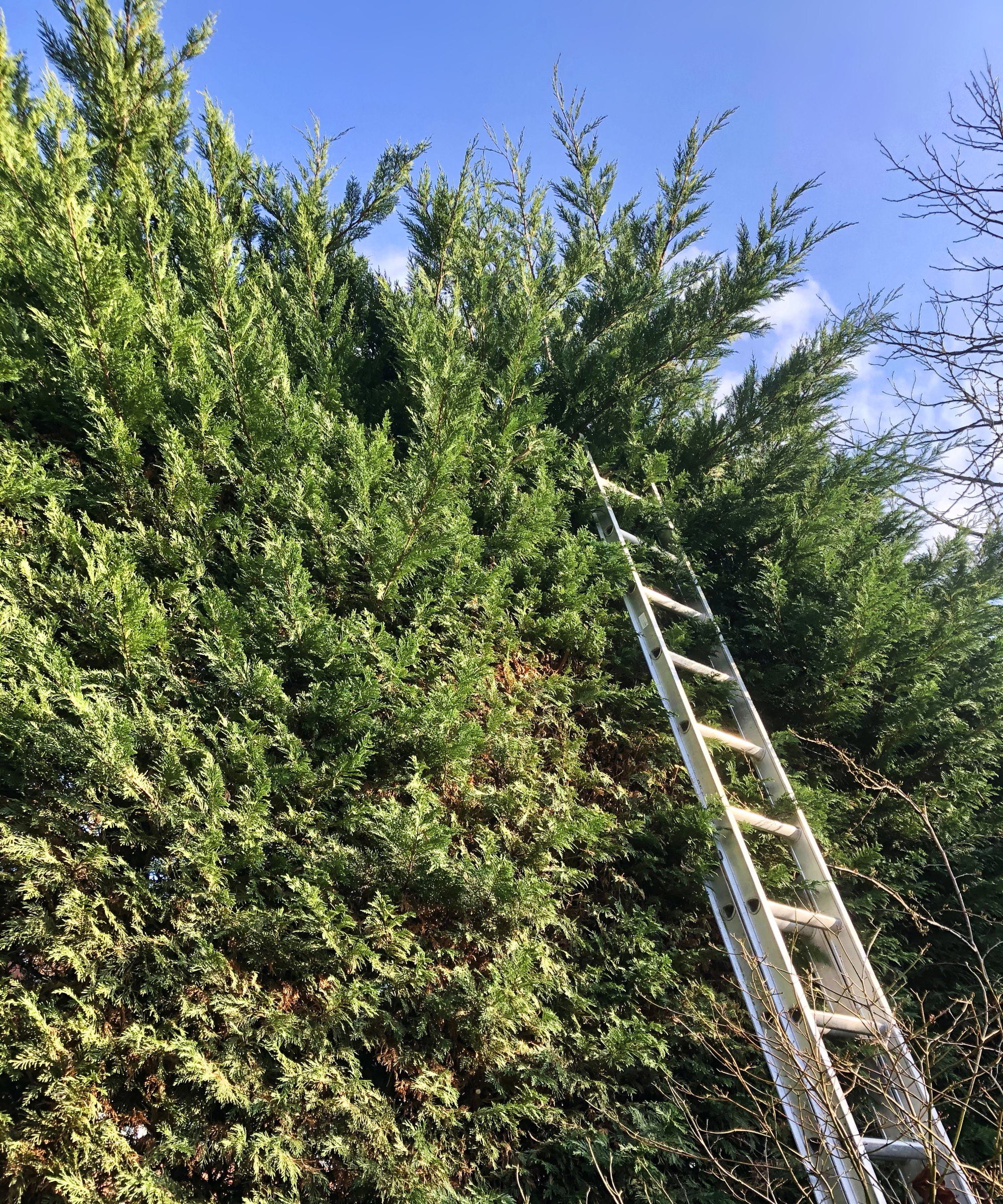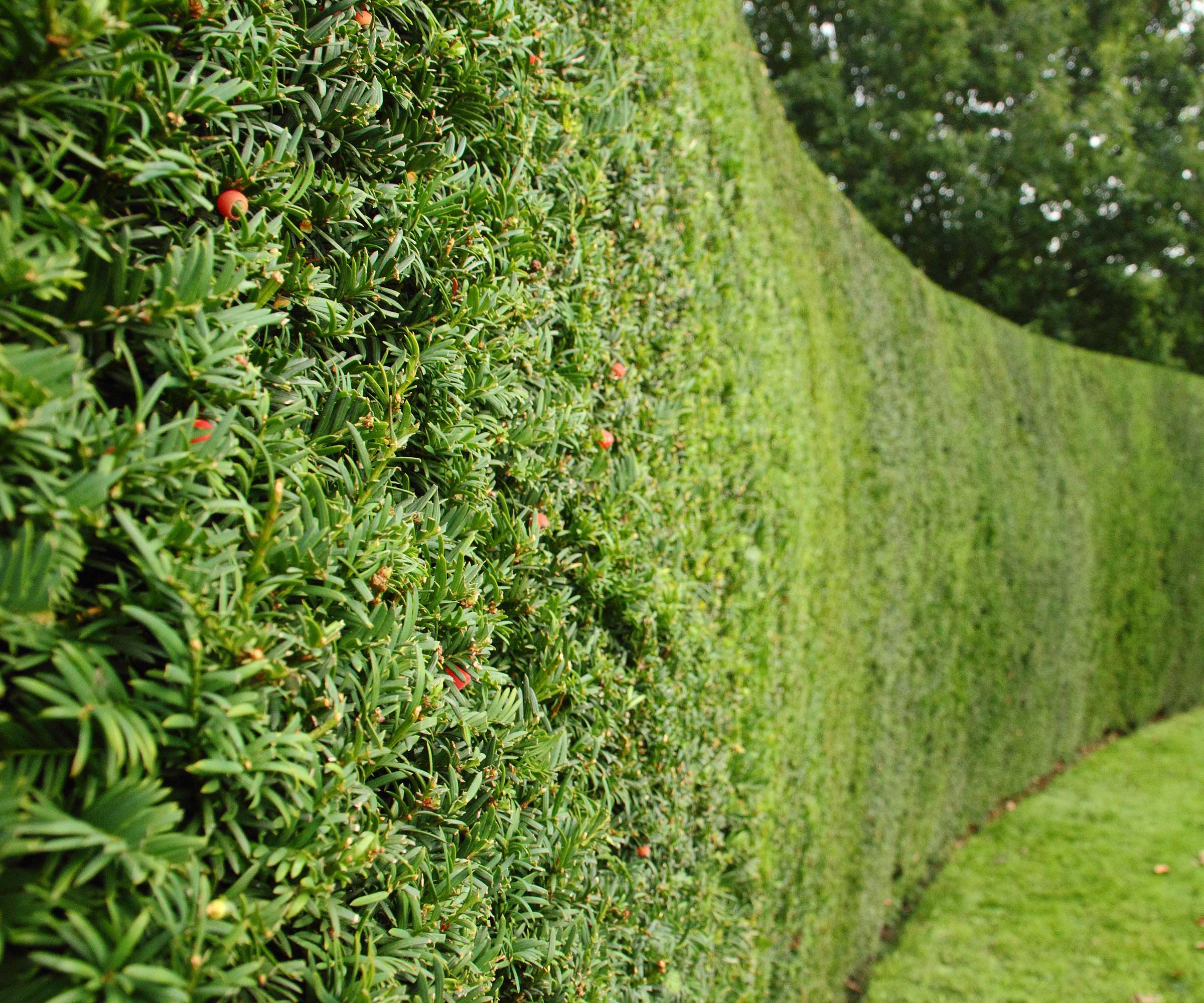
A hedge often makes a fantastic way of creating a boundary and giving privacy to a backyard. Pruning hedges is important to keep the plants healthy, well-shaped, and under control - as they can quickly get overgrown and unruly if left untrimmed for too long.
Overgrown hedges can be unsightly and block sunlight from getting into your garden. They may invade space, lead to disputes between neighbours, and even result in fines when tall hedges flout homeowners association rules. A hedge that has got overgrown can be trickier to prune, but it is not a lost cause and they can be brought back into line over time.
So you need to know how to prune hedges and, more accurately, cut back overgrown hedges. Whether they are causing problems now or threatening issues down the road, it pays to know how to cut back overgrown hedges - as it may take planning and time to fix.

How to cut back overgrown hedges - an expert guide
For many years, I pruned hedges as a professional gardener in large, historic public gardens in the UK. I have also spoken to some garden experts to put together helpful tips for how to cut an overgrown hedge. This guide looks at when and how to cut an overgrown hedge so yours can recover from trimming to look great and grow as healthy as possible.
When to trim an overgrown hedge

It is imperative to prune hedges at the right time of year. This helps guarantee that the hedge responds to the pruning with healthy growth and minimal risk of diseases. When deciding when to prune hedges, it is important to consider the type of hedging plant. Late winter or early spring is usually ideal for pruning deciduous hedges, while late spring is best for trimming evergreen bushes and hedges.
‘However, as a rule of thumb, I’d recommend pruning most overgrown hedges in spring, just before new growth starts – an overcast, cloudy day, neither too hot nor too cold, will make for ideal conditions,’ recommends Paul Hicks, product and marketing manager at STIHL GB. ‘No matter what type of hedge you have, you must always make sure to check for nesting birds or other wildlife before taking on the task, and never remove or damage an active nest.’
Overgrown hedges may require more extensive pruning than regular hedge trimming. It is better to carry out more large-scale trimming over a few years, and it would be a pruning mistake to attempt to do it all in one go.
'It’s important to be patient and not try to trim everything back all at once. Instead, aim to prune over a few seasons,’ advises Steve Swanborough, a gardening expert at Henchman. ‘This gradual approach allows you to rejuvenate the hedge without stressing the plant.’
Is there any time to avoid cutting an overgrown hedge? It would not be advised to cut overgrown hedges in the fall in cooler climates. This encourages a fresh flush of new growth that will not harden off before winter - leaving the tree vulnerable to pests and diseases. There are also lots of fungal spores around at that time that can get into pruning wounds.
Also, never prune an overgrown hedge in periods of extreme weather, including extreme cold in midwinter or extreme heat in midsummer. Both of which can stress the hedge and jeopardize its future health.
How to trim overgrown hedges - expert tips for success

Proper pruning will keep any fast-growing hedge healthy and aesthetically pleasing. However, even if a hedge gets unkempt it can be brought back into control by following some simple steps. Here are a few pointers from professionals about how to cut an overgrown hedge.
Before trimming, Steve Swanborough hails how important it is to have the correct pruning tools for pruning overgrown hedges. ‘Sharp shears are essential for quick and effective cutting and ensuring they are clean will also reduce the risk of disease to the plant,’ says the experienced horticulturist.
The best garden tools for trimming an overgrown hedge may include pruning shears, hedge shears, hedge trimmers, long-handled pruners or a ladder for well-established branches. ‘Always wear a pair of gloves with good grip to make handling tools easier and consider safety goggles too,’ says Steve about personal protective equipment.
Start with the sides of the hedge and work upwards from the bottom of the hedge. Focus on renewal pruning and remove the oldest and thickest branches first to encourage fresh growth. However, be selective about which branches you remove. Graham Smith, a gardening expert from LBS Horticulture, warns: ‘An overgrown hedge can cope with being heavily trimmed, but do not cut any of the main branches that feed the top of the plant.’
As mentioned above, it is important not to prune everything if the hedge needs lots of renovation. The one-third pruning rule says not to remove more than a third of the entire growth in one go - and it is something to consider when you cut an overgrown hedge. Removing too much growth can stress the hedge, leaving it vulnerable to pests and diseases and leaving question marks over how well it will respond to trimming.
‘Prune it back hard, but only one on side, allowing your plant time to recover before pruning back the other side the following year,’ says Paul Hicks. While you prune one side hard, prune the other half with a more gentle touch and don’t reduce the height. Do the other side hard the following year and then finally reduce the height in year three.
When you prune, shape the hedge so it is thinner at the top than the bottom to allow light to get to the bottom of the hedge and help with healthy regrowth. Clear away the clippings after pruning to reduce the risk of pests and disease and give the hedge extra care after trimming.
‘Make sure to water your hedge well in any dry spells after renovation, for at least the first growing season, and mulch and feed your hedge in spring to promote growth,’ adds Paul Hicks.
Tools to cut an overgrown hedge
An 18-volt cordless hedge trimmer with a long 22-inch blade with a 3/4 inch cut capacity. It is a lightweight trimmer yet ideal for tougher, larger hedges.
This 25" hedge trimmer is perfect for cutting large hedges made of thick wood. It has a two-speed range selector and can cut for up to 60 minutes on a single charge.
Telescopic hedge shears with steel handles that extend from 25 inches to just over 31 inches. Power-Lever technology as much as doubles the cutting power from the precision-ground steel blades.
FAQs
What is the best tool for cutting overgrown hedges?
A variety of pruning tools may be required to cut an overgrown hedge. It will depend on the type of hedge and how overgrown it is, but a combination of a hedge trimmer, a pair of loppers, and some pruning shears are usually the best tools. Smaller hedges that need controlling may be pruned with hedge shears.
Can you cut a hedge back too much?
Yes, you can be too vigorous when you cut an overgrown hedge. Trimming too much material in one go can stress the hedge and this will affect how, or if, it regrows after trimming. Removing too many leaves can affect photosynthesis and some hedging plants will not recover well when pruned far back into the old wood. Taking the time to cut an overgrown hedge back in a planned and gradual manner will reduce the risk of stressed plants and the hedge dying back.
It may not be your overgrown hedge. Unruly hedges can trigger disputes between neighbors and you may find yourself thinking, can I cut my neighbors hedge? If this is an issue affecting you, the law says you can trim any part of the overgrown hedge growing over your property line, but not past that point and into your neighbor’s property.







